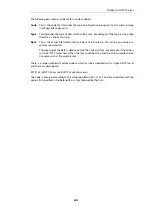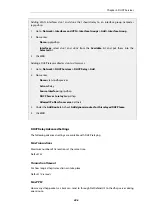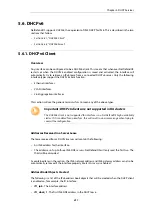
5.4. IPv4 DHCP Relay
Note
DHCP relay is a feature which is currently only available with IPv4 DHCP.
The DHCP Problem
With DHCP, clients send requests to locate the DHCP server(s) using broadcast messages.
However, broadcasts are normally only propagated across the local network. This means that the
DHCP server and client always need to be on the same physical network. In a large Internet-like
network topology, this means there would have to be a different DHCP server on every network.
This problem is solved by the use of a
DHCP relayer
.
The DHCP Relayer Solution
A DHCP relayer takes the place of the DHCP server in the local network and acts as the link
between the client and a remote DHCP server. It intercepts requests coming from clients and
relays them to the DHCP server. The DHCP server then responds to the relayer, which forwards
the response back to the client. DHCP relayers use the TCP/IP
Bootstrap Protocol
(BOOTP) to
implement this relay functionality. For this reason DHCP relayers are sometimes referred to as
BOOTP relay agents
.
The Source IP of Relayed DHCP Traffic
For relayed DHCP traffic, the option exists in NetDefendOS to use the interface on which it listens
as the source interface for forwarded traffic or alternatively the interface on which it sends out
the forwarded request.
Although all NetDefendOS interfaces are
core routed
(that is to say, a route exists by default that
routes interface IP addresses to
Core
), for relayed DHCP requests this core routing does not apply.
Instead, the interface is the source interface and not
core
.
Adding Dynamic Routes for Relayed DHCP Leases
This
DHCP Relay
object property should be enabled to add a route automatically for each DHCP
lease that is handed out to a client via the DHCP relay. This property is enabled in the example
described at the end of this section.
This option can add large numbers of routes to the routing table and a better solution is to set up
a single static route in advance which routes the IP range that could be handed out on the
correct interface.
Enabling Proxy ARP
In some scenarios, it is necessary to add a route for each DHCP lease using the property
described above. Consider the layout shown below, where a single DHCP server is handing out
IPs in the same network range via relay by NetDefendOS to two clients on the separate interfaces
If1
and
If2
.
Chapter 5: DHCP Services
404
Summary of Contents for NetDefendOS
Page 30: ...Figure 1 3 Packet Flow Schematic Part III Chapter 1 NetDefendOS Overview 30 ...
Page 32: ...Chapter 1 NetDefendOS Overview 32 ...
Page 144: ...Chapter 2 Management and Maintenance 144 ...
Page 284: ...Chapter 3 Fundamentals 284 ...
Page 392: ...Chapter 4 Routing 392 ...
Page 419: ... Host 2001 DB8 1 MAC 00 90 12 13 14 15 5 Click OK Chapter 5 DHCP Services 419 ...
Page 420: ...Chapter 5 DHCP Services 420 ...
Page 573: ...Chapter 6 Security Mechanisms 573 ...
Page 607: ...Chapter 7 Address Translation 607 ...
Page 666: ...Chapter 8 User Authentication 666 ...
Page 775: ...Chapter 9 VPN 775 ...
Page 819: ...Chapter 10 Traffic Management 819 ...
Page 842: ...Chapter 11 High Availability 842 ...
Page 866: ...Default Enabled Chapter 13 Advanced Settings 866 ...
Page 879: ...Chapter 13 Advanced Settings 879 ...












































